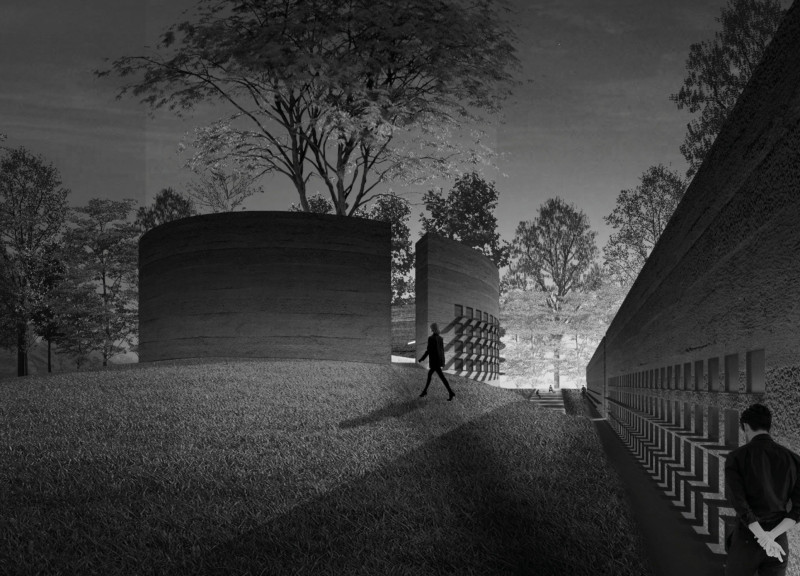5 key facts about this project
The design is based on the concept of Janus, the ancient Roman god who represents beginnings and transitions. Placed in an environment that promotes contemplation, the structure serves several functions while encouraging visitors to reflect on the dual nature of life and death. The design aims to engage individuals emotionally, inviting them to consider their own existence through various architectural elements that embody these complex themes.
Design Concept
A central wall is the main feature of the design. It serves both as a boundary and a bridge between the ideas of life and death. This wall has two different surfaces which convey contrasting themes. One side uses a polished surface of stamped concrete, inviting visitors to reflect on their lives. The other side has a rough texture, encouraging a more direct interaction with the reality of mortality.
Symbolic Elements
An intriguing feature of the design is a tree positioned next to the wall that represents death. This natural form symbolizes the passage to another realm for the deceased. Integrating organic elements in the design softens the hard architectural lines. This adds visual interest and reinforces the concept of life’s cyclical nature, creating a dialogue between the built and natural environments.
Spatial Arrangement
The overall layout includes areas for gathering and quiet reflection. These spaces are thoughtfully arranged to encourage interaction between visitors and the themes presented. They provide opportunities for moments of pause and contemplation, suggesting a journey through the transient nature of life. The arrangement enhances immersion, allowing individuals to engage with their personal thoughts and emotions.
Historical Context
The design draws inspiration from the ash urn cemeteries of 1st millennium BC in Latvia. This historical reference adds depth to the narrative, connecting modern architectural approaches with ancient practices of memorialization. The relationship between the past and present enriches the visitor experience, providing a broader understanding of the themes of life and death.
The reflective qualities of the wall prompt visitors to think about their existence. The contrasting textures create an emotional resonance, fostering a dialogue between different elements within the space.





















































